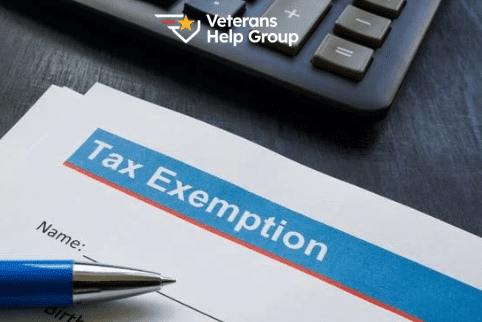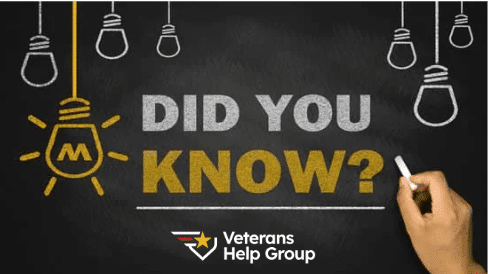Table Of Contents

At some point, most veterans will hear about a type of disability benefits called Total Disability due to Individual Unemployability, which is often referred to under the common abbreviations TDIU or simply IU. TDIU is a great benefit, but there are many TDIU myths that are told to veterans.
First, it is important to know what TDIU is. Veterans may qualify for payment at a 100 percent rating if they meet certain criteria and are unable to work due to their service-connected conditions, even if their regular combined rating is less than 100 percent. For a veteran to qualify for Total Disability due to Individual Unemployability, they usually must either have:
- One service-connected disability rated at 60 percent or more or;
- Two or more service-connected disabilities that have a combined rating of 70 percent, and one of those conditions rated at least 40 percent.
Now that we know what TDIU is, let’s talk about some common myths that surround TDIU.
Myth 1: In order to receive TDUI, the veteran cannot be employed.
This is not true. The VA may grant TDIU when a veteran is unable to secure or follow a substantially gainful occupation due to their service-connected disabilities. While to most the words “substantially gainful occupation” may seem like meaningless jargon, the courts have determined that these words specifically mean employment where the Veteran earns more than what the current federal poverty level is for an individual. Right now, the Federal poverty level is about $12,000. This means, an employed Veteran who earns $12,000 or less per year, may be eligible for TDIU despite the fact that they are employed.
In some case, even if a Veteran is employed and earning more than $12,000 a year, they may still be eligible for TDIU if the VA considers the Veteran’s employment to be in a “protected environment,” also known as sheltered work environment. While the VA has not provided a definition of “protected environment,” generally, if a Veteran can show their service-connected injuries prevent them from consistently performing their duties in a reasonable time and the employer has made accommodations for the Veteran, the employment will be considered to be in a “protected environment.” For example, a veteran who has a service-connected back injury and works as a tour guide in a museum would be considered to have been accommodated by his employer if they allow him to use a scooter to lead his tours when no other employee is allowed to use a scooter. In this case, the accommodation suggests that the veteran works in a protected environment and may be entitled to TDIU.
Myth 2: If I don’t meet the percentage requirements, the VA will not grant TDIU.
While in most cases, the VA does not grant TDIU when a veteran does not have one individual 60 percent rating or a combined 70 percent rating with one individual rating at least 40 percent, the VA is allowed to make exceptions. If the veteran is rated less than 60 percent and still wants TDIU, they still may be able to receive TDIU by applying for something called an extraschedular rating.
An extraschedular rating is when the VA criteria for rating a veteran’s disability does not reflect the severity of the veteran’s disability, so the VA gives more than the maximum percentage allowed for that particular disability. The veteran must show that his disability is so severe that it causes a substantial interference with his ability to work. For example, a veteran who suffers from service-connected fibromyalgia rated as 40 percent disabling will have a strong argument for extraschedular TDIU if they can show that their fibromyalgia causes severe pain with prolonged sitting or standing, and they have incapacitating episodes several times a month.
Myth 3: I have SSDI, so the VA will automatically grant TDIU.
It is a common mistake to think that, because a veteran has been approved for Social Security Disability Insurance benefits (SSDI) by the Social Security Administration, they will automatically be eligible for TDIU through the VA.
To be eligible for either TDIU or SSDI, a veteran must generally (there are some slight exceptions) be unable to work due to physical and/or mental disabilities, but there are also some important differences. For example, the VA only considers a veteran’s service-connected disabilities while SSA considers all disabilities. Additionally, a veteran may be eligible for TDIU if their disabilities keep them from doing their past work, while for SSDI, being capable of doing any job may be a disqualifier. Finally, the VA cannot consider a veteran’s age for TDIU, while age is one of the most important factors in a SSDI claim.
To learn more about how SSA decisions influence your chance to receive TDIU, see the following post: Does SSDI guarantee TDIU?
Myth 4: Any condition I have, whether service-connected or not, is relevant to TDIU.
As previously mentioned, when determining entitlement to TDIU, the VA only considers disabilities that are service-connected. A veteran could have service-connected knee injuries that make walking and standing difficult and a non-service-connected back injury that is aggravated by prolonged sitting. The combined effect of all the veterans conditions would make working any type of job difficult. However, the VA will not consider the back injury, because it is not service-connected.
Myth 5: Once I have been granted TDIU, the VA will never take it away.
Unless the veteran’s service-connected disability is considered permanent and total, the VA may reevaluate the severity of the veteran’s conditions by rescheduling compensation and pension examinations. If the veteran’s disabilities have improved, the VA may revoke TDIU. In addition, the VA will periodically ask that the veteran submit certification of non-employment.
If you need assistance making a claim for TDIU benefits, we are here to help. Call Veterans Help Group at (855) 855-8992or complete our free veterans benefits case evaluation form.

VA Disability Benefits and Tax Exemptions: What You Should Know
VA Disability Benefits and Tax Exemptions: What You Should Know Written by: Schuyler Swanton,...

Veterans Help Group In The Community
Veterans Help Group in the Community Written by: Bobbi Boudi, Director of Community Outreach, Amy...

The Veterans Appeals Efficiency Act of 2025
The Veterans Appeals Efficiency Act of 2025 Several bills are currently pending in Congress that...





